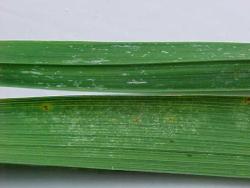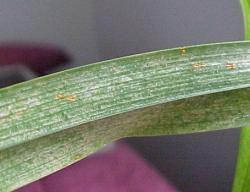Seedfork said:
know you have irrigation for your plants, so my question is (obviously watering does not stop them) but does it even slow them down or is that stuff just being repeated and is really just a bunch of hooey! .... How much and what kind of damage do spider mites do to daylilies and do you have any idea how long it would take them to do considerable damage?
This is from an old article:
"Mites ovipositing in a dry atmosphere lay more eggs at a higher rate and live longer than do mites ovipositing in a near saturated atmosphere. Hatching of eggs is apparently not greatly affected by extremes of humidity. Newly hatched mites survive poorly in a moist atmosphere. The results are explained on the basis of the ability to ingest larger amounts of, and to utilize more, food in a dry atmosphere through the elimination of body moisture by evaporation from the cuticle. It is suggested that spider mites may be more easily controlled in greenhouses if a high relative humidity is maintained."
From: Boudreaux, H. B. (1958). The effect of relative humidity on egg-laying, hatching, and survival in various spider mites. Journal of Insect Physiology, 2(1), 65-72.
I found a couple of other articles that seemed to contradict that but then:
"Abstract. 1. This study examines the shape of the population response curve of the two-spotted spider mite, Tetranychus urticae Koch, feeding on bean plants, Phaseolus vulgaris L., which have been subjected to one of a range of drought stresses.
2. Abundance of spider mites declined at slight drought stress, increased at intermediate intensities of stress, and declined again at severe stress.
3. Fecundity showed the same pattern found for total abundance. Developmental rates of immatures, on the other hand, generally increased with stress intensity. Survivorship of immatures and adult females appeared unrelated to stress intensity.
4. These results indicate that responses of mites to drought-stressed beans are nonlinear. Such a pattern helps explain contradictory results obtained for spider mites and other arthropod herbivores."
That's from: English-Loeb, G. M. (1989). Nonlinear responses of spider mites to drought‐stressed host plants. Ecological Entomology, 14(1), 45-55.
Re damage, here are a couple of pictures. First is a comparison of leaf damage from thrips (top) to compare with spider mite damage (bottom):

This one is worse spider mite damage combined with daylily rust:


